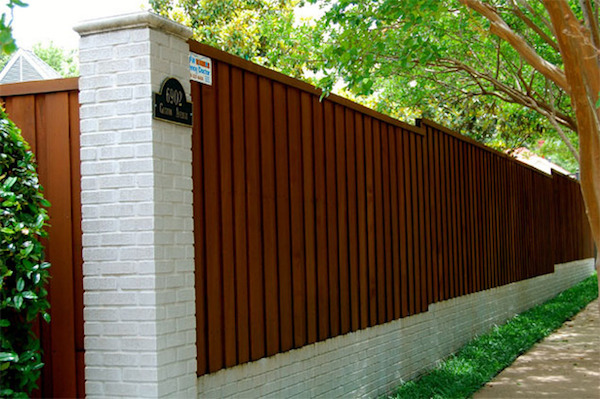
Whether it’s your deck, porch, or fencing, all wooden structures eventually need some TLC. Regular upkeep is necessary in order to avoid dry rot, weathering, and overall deterioration. And though these additions are supposed to add curb appeal to the home, if not properly maintained they could become an ugly eyesore and actually devalue a piece of property. So to prevent structural repair or complete replacement, it’s always a good idea to frequently stain or paint your fencing. It’s not the most difficult job, but with all the prep steps and repetition, it’s probably the least exciting. So though there are a few things you’ll want to be aware of when planning the project, you may want to think about leaving the real fence painting to the professionals.
Tom Sawyer Blues
There’s a reason why America’s most famous troublemaker conned his friends into doing the dirty work: fence painting is a real pain. In fact, it takes a considerable amount of time and effort just in the preparation. First, clean the area thoroughly by removing all built up dirt and debris (it’s wise to rent a pressure washer for this job). Then, if it’s a re-coat, scrape off all the old paint, sand down the rough or worn areas, and repair any damage suffered over the winter. Finally, like in the home, tape your hardware and hinges. Plus, put down a small section of plywood to protect nearby concrete structures and shrubs (it’ll also save your bristles from getting dirty when near the ground). Now you’re ready to paint the longest wall of your life since both sides will need a few coats, requiring lots of special paint and quality supplies. As you can see, fence painting is a large investment, not only of money and time, but labor as well. So to avoid the strain on your wallet and back, it may be better served to hire a crew who will cost about the same, get the job done quicker, and in the end guarantee an appealing finished product.
Fence Staining: More of the Same
Though fence staining involves a similar process it is just as important: if the wood isn’t coated with something, it’ll quickly turn gray and could crack, warp, or split. Stain is probably the more popular method of protection since it highlights the wood’s natural color, grain, and texture, but before application some time should be spent researching your specific installation. Planks come in all varieties (spruce, cedar, or pine are most common), and each requires a unique form of stain, prep work, and technique so consult an expert before buying anything. Also, after the fence staining is complete, a coat of sealer or wood preservative should be applied for additional protection (wear a mask, goggles, and gloves to protect against fumes and spills). Once again, it’s an arduous job involving detailed work (you must get between each plank and in every nook), so there’s no shame in avoiding the “heavy lifting” by calling on a pro.
To make sure that the new coat matches your deck, the professional fence staining cost may be well worth it.
Ready to start your fence painting?
Find ProsPrepping for Fence Painting
There’s nothing worse than putting in a lot of hours and ending up with lackluster results. So though it’s smart to hire a professional for the project there are a lot of things that you can do yourself beforehand. A large part of the contractor’s fee is in the preparation since it takes up so much time and is considered grunt work. These professionals are specially trained to protect and treat wood structures, so if you just want to hire their talents it’s smart to get the prep steps out of the way: it saves them time which will save you money. Take a bucket of warm water and wipe the dirt, dust, or bird droppings off the wood. Or rent a pressure washer to give the experts a fresh layer to work with, but make sure to get at the outside perimeter and the top of the boards as well. Mow and edge around the bottom to allow extra room, scour those unattended corners that may be congested with spider webs or weeds, and sand out rough patches (always going with the grain).
Then, when calling upon a service professional, give them an idea of the size and style of the fencing as well as the species of wood they’ll be working with so they can give you a solid estimate (don’t forget to tell them you’ll do the prep work). Also, as your appointment approaches, keep an eye on the forecast: before, during, and after the application you’ll need dry weather (though cloudy and overcast is always preferred), so if there isn’t a two-day gap in the rain, expect postponements and delays.
 Stylish Security: Wrought Iron Gates
Stylish Security: Wrought Iron Gates  Material Issue: Wood and Metal Gates
Material Issue: Wood and Metal Gates  24 Famous Walls & Fences from Fiction
24 Famous Walls & Fences from Fiction  Fence Installation Checklist
Fence Installation Checklist  Wood Fence Options
Wood Fence Options 

Are You Familiar With This Topic? Share Your Experience.